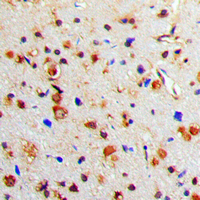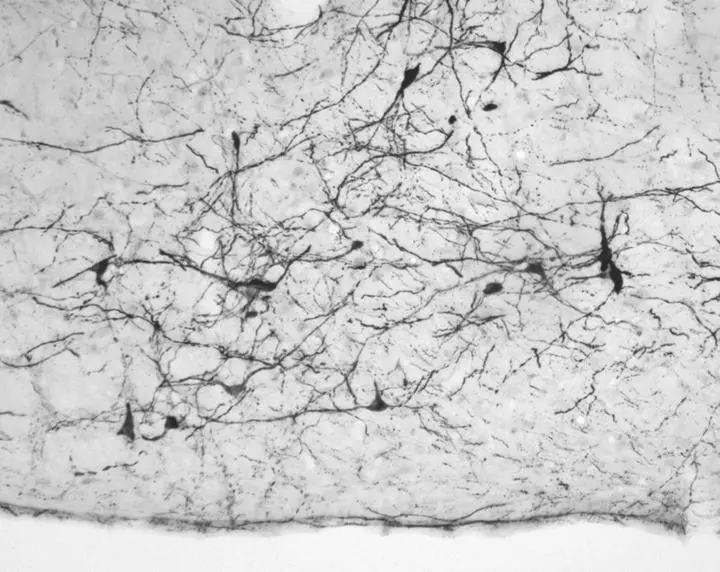Tyrosine Hydroxylase antibody
GTX113016
ApplicationsImmunoFluorescence, Western Blot, ImmunoCytoChemistry, ImmunoHistoChemistry, ImmunoHistoChemistry Frozen, ImmunoHistoChemistry Paraffin
Product group Antibodies
TargetTH
Overview
- SupplierGeneTex
- Product NameTyrosine Hydroxylase antibody
- Delivery Days Customer9
- Application Supplier NoteWB: 1:500-1:3000. ICC/IF: 1:100-1:1000. IHC-P: 1:100-1:1000. IHC-Fr: 1:100-1:1000. *Optimal dilutions/concentrations should be determined by the researcher.Not tested in other applications.
- ApplicationsImmunoFluorescence, Western Blot, ImmunoCytoChemistry, ImmunoHistoChemistry, ImmunoHistoChemistry Frozen, ImmunoHistoChemistry Paraffin
- CertificationResearch Use Only
- ClonalityPolyclonal
- Concentration0.21 mg/ml
- ConjugateUnconjugated
- Gene ID7054
- Target nameTH
- Target descriptiontyrosine hydroxylase
- Target synonymsDYT14, DYT5b, TYH, tyrosine 3-monooxygenase, dystonia 14, tyrosine 3-hydroxylase
- HostRabbit
- IsotypeIgG
- Protein IDP07101
- Protein NameTyrosine 3-monooxygenase
- Scientific DescriptionThe protein encoded by this gene is involved in the conversion of tyrosine to dopamine. It is the rate-limiting enzyme in the synthesis of catecholamines, hence plays a key role in the physiology of adrenergic neurons. Mutations in this gene have been associated with autosomal recessive Segawa syndrome. Alternatively spliced transcript variants encoding different isoforms have been noted for this gene. [provided by RefSeq]
- Storage Instruction-20°C or -80°C,2°C to 8°C
- UNSPSC12352203
References
- Klotho Null Mutation Indirectly Leads to Age-Related Lacrimal Gland Degeneration in Mutant Mice.Read more
- Chemogenetic Activation of Oxytocin Neurons Improves Pain in a Reserpine-induced Fibromyalgia Rat Model.Read more
- In Vitro Generation of Brain Regulatory T Cells by Co-culturing With Astrocytes.Read more
- Low dose DMSO treatment induces oligomerization and accelerates aggregation of alpha-synuclein. Reimer L et al., 2022 Mar 8, Sci RepRead more
- Dopaminergic Neurons in the Ventral Tegmental-Prelimbic Pathway Promote the Emergence of Rats from Sevoflurane Anesthesia. Song Y et al., 2022 Apr, Neurosci BullRead more
- Impairment of human dopaminergic neurons at different developmental stages by perfluoro-octanoic acid (PFOA) and differential human brain areas accumulation of perfluoroalkyl chemicals. Di Nisio A et al., 2022 Jan, Environ IntRead more
- Evidence of a new hidden neural network into deep fasciae. Fede C et al., 2021 Jun 16, Sci RepRead more
- Transcription- and phosphorylation-dependent control of a functional interplay between XBP1s and PINK1 governs mitophagy and potentially impacts Parkinson disease pathophysiology. El Manaa W et al., 2021 Dec, AutophagyRead more
- Ninjinyoeito improves anxiety behavior in neuropeptide Y deficient zebrafish. Kawabe M et al., 2021 Jun, NeuropeptidesRead more
- The Inhibition of miR-873 Provides Therapeutic Benefit in a Lipopolysaccharide-Induced Neuroinflammatory Model of Parkinsons Disease. Wu J et al., 2020, Oxid Med Cell LongevRead more



![IHC-P analysis of human midbrain using GTX01922 Tyrosine Hydroxylase antibody [1B5]. Note cytoplasmic staining of catecholaminergic cells and their processes.](https://www.genetex.com/upload/website/prouct_img/normal/GTX01922/GTX01922_20200811_IHC-P_103_w_23053121_765.webp)

